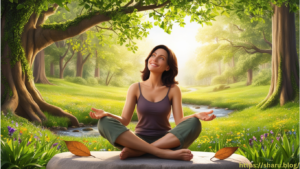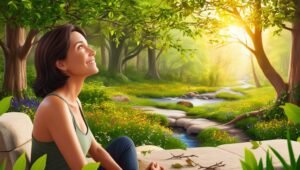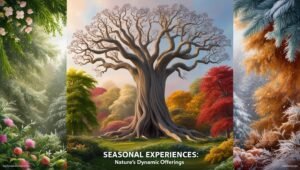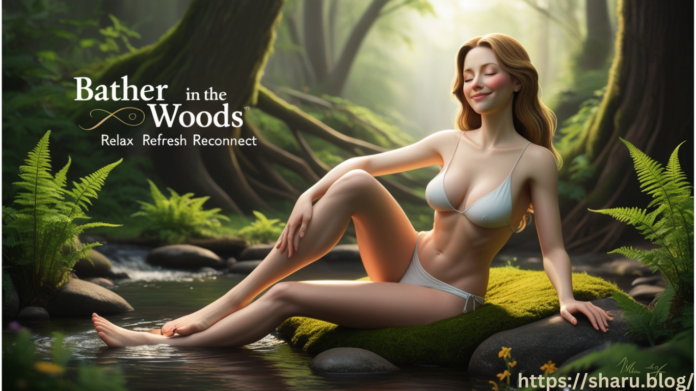Reconnecting with nature has become essential in today’s fast-paced world. The idea of a “bather in the woods” perfectly captures this desire by providing a haven for those looking to get away from the bustle of the city, regain their mental equilibrium, and revitalise their soul. The woods provide the ideal environment for rest, refreshment, and reconnecting regardless of your interests—adventure mindfulness or a need for isolation.
The Art of Bather in the Woods: More Than Just a Walk

“Shinrin-yoku,” or Bather in the Woods, is a Japanese therapeutic technique. Forest bathing is a conscious absorption in nature as opposed to hiking or trekking. It encourages people to use all of their senses, with the rustling leaves, earthy aromas, and dappled sunshine all having a very relaxing impact.
Forest bathing has been shown to improve mood, increase immunity, and decrease stress hormones. Without the distractions of technology, participants often report feeling a profound sense of calm as they take in the soft rhythms of the forest. This age-old technique is a tried-and-true way to develop mindfulness and overall well-being, not simply a fad.
Health Benefits of Reconnecting with Nature

There are many health, mental, and spiritual advantages to spending time in the woods. Here are some examples of how the practice improves our wellbeing:
1. Reduced Stress Levels
By lowering the stress hormone cortisol, the peace of woods encourages relaxation. Forest bathing is a useful stress-reduction technique since studies show that being in natural settings lowers heart rate and blood pressure.
2. Improved Mental Clarity
The calm of nature encourages introspection, which helps people think more clearly. Our thoughts can clear out when there is less urban noise, which enhances our ability to concentrate, solve problems, and be creative.
3. Enhanced Physical Health
Tree-emitted chemical substances called phytoncides, which strengthen the immune system, are abundant in forests. Frequent exposure to these substances has been associated with better respiratory health, higher energy levels, and a lower chance of developing chronic diseases.
4. Emotional Healing
The power of nature to heal emotional scars is unmatched. It is well-recognised that the sights and sounds of the forest may improve mood, fight anxiety symptoms, and lessen depressive symptoms. Emotional equilibrium is restored by connecting with the soil.
How to Fully Embrace the Experience

You must approach the experience with purpose if you want to get the most out of your time in the woods. The following useful advice will help you get the most out of your immersion:
1. Disconnect to Reconnect
Distractions may be avoided by leaving electronic gadgets behind. Turn off your phone pack sparingly and just carry necessities like water, a diary, and clothes that are suited for the weather.
2. Engage Your Senses
Inhale deeply to enjoy the crisp scent of the forest. Examine the delicate movement of light through the canopy, run your hands over tree barks, and pay great attention to bird sounds. Using all of your senses strengthens your connection with the environment.
3. Find Your Sanctuary
Find a place in the woods that speaks to you by exploring its many sections. It can be a peaceful grove, a stream-fed mossy area, or a clearing illuminated by sunshine. Permit yourself to stay there.
4. Practice Gratitude
Take a minute to appreciate the beauty all around you as you immerse yourself in nature. Gratitude cultivates inner tranquillity and strengthens your connection with the natural world.
Seasonal Experiences: Nature’s Dynamic Offerings

With each changing season, the forests provide new chances for reconnection.
Spring
The woodland comes alive with colourful blossoms and a chorus of birdsong in the spring. In keeping with the cycle of nature, now is the ideal moment to experience development and rebirth.
Summer
Long sunny days throughout the summer are perfect for absorbing vitamin D. It’s the ideal time of year for peaceful picnics or leisurely hikes because of the shade provided by the forest canopy.
Autumn
The cool air and blazing colours of autumn create a mystical ambience. Falling foliage encourages reflection and shift readiness.
Winter
The peaceful snow-covered forests provide unmatched seclusion and quiet, making them perfect for meditation. Resilience and a feeling of calm are fostered by winter.
Activities That Deepen the Connection

Beyond just strolling, there are many more things to do in the woods. Here are some suggestions to increase your level of involvement:
1. Meditation and Yoga
Practicing mindfulness outdoors through yoga or meditation improves your mental and physical well-being. The soothing sights and sounds of nature enhance these benefits.
2. Journaling
Keep a notebook to record your emotions, ideas, and observations. Writing outdoors encourages reflection and creativity.
3. Wildcrafting
You may connect with the cycles and gifts of the forest by foraging for edible plants or herbs, which exposes you to its bounty.
4. Wildlife Observation
Bring binoculars so you can see the surrounding diverse ecology. Observing the complex relationships between plants, animals, and their environments cultivates a deep respect for the natural world.
Choosing the Perfect Location
Woods vary from one another. Selecting the right venue is essential to producing a totally immersive experience. Among the things to think about are:
- Accessibility: Make sure it’s simple to access and explore the woods.
- Biodiversity: Choose regions renowned for their abundant wildlife and plants.
- Safety: Learn about the area’s fauna, possible dangers, and pathways.
For those seeking unmatched natural beauty, famous forest bathing locations like Japan’s Aokigahara Forest Germany’s Black Forest and California’s Redwoods are perfect.
Making it a Habit
the long-term advantages of spending time in the woods. Plan frequent visits to incorporate the practice into your daily routine. Weekly outings or monthly getaways can greatly enhance your physical and emotional health, ensuring your long-term well-being.
The Future of Forest Connection
The need for natural sanctuaries is increasing as urbanisation picks up speed. Projects like guided immersion programs, eco-lodges, and forest healing pathways are gaining traction. The initiative emphasises how crucial sustainable practices are to protecting these refugees for the next generation.
Final Thoughts:
More than just a way to escape from everyday life, spending time in the woods may change you and help you rediscover your inner self and the spirit of nature. Your body, mind, and spirit may all benefit greatly from the forest’s tranquillity, sensory diversity, and healing potential. You may cultivate a greater appreciation for nature and lessen stress by consciously adopting this habit.
Going into Bather in the Woods serves as a reminder of the beauty and simplicity that are all around us in a culture that is dominated by speed and technology. The forest is accessible to you whether you’re looking for emotional healing, relaxation, or insight. Develop the habit of enjoying the moment and letting nature lead the way in promoting harmony and well-being.
FAQs:
What is forest bathing, and how does it benefit me?
Immersion in the natural setting of a forest to completely engage your senses is known as “Shinrin-yoku,” or “Bather in the Woods.” Reduced stress, higher immunity, better mood, and more creativity are some advantages. It fosters a close relationship with nature, which aids in mental clarity and emotional recovery.
How long should I spend in the woods to experience the benefits?
Try to spend at least two hours in nature for the most advantages. According to studies, taking a forest bath for 30 to 60 minutes may begin to lower stress levels, but longer periods promote deeper healing and relaxation. As you become more comfortable with the exercise, you may progressively extend your time.
Do I need any special equipment for forest bathing?
Forest bathing doesn’t need any specialised equipment. It is advised to bring a water bottle,, comfortableclothes,s and sturdy shoes. Don’t bring electronics or other distractions since the emphasis is on being in the moment while in nature.



